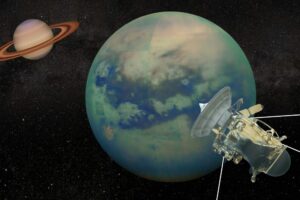‘Aurora is completely NUTS right now in Iceland!’
An Icelandic room reservation paid off big for a student “aurora chaser.”
Vincent Ledvina traveled halfway across the world from Alaska to Iceland and spotted surges of green auroras the night of Jan. 13, right over his cabin, cataloging a terabyte’s worth of “absolutely bonkers(opens in new tab)” northern lights footage about two hours from Reykjavík.
“This particular […] location was legendary and led to some of my favorite aurora compositions ever,” said Ledvina in a tweet(opens in new tab); he is no stranger to the shimmering green lights given that he is usually based in Fairbanks, Alaska.
“This was the perfect finale to our Iceland trip, and my friends who had never seen the aurora were treated to a solid show. Now they understand why I’m obsessed,” Ledvina added on Twitter(opens in new tab).
Auroras, also known in the northern hemisphere as the northern lights, or the aurora borealis, are patterns of light in the sky that occur due to activity from our sun. Energetic particles from the star careen into Earth’s upper atmosphere and are redirected towards the poles by the magnetic field of our planet.
The sun is climbing towards a peak of its 11-year-cycle of activity, and had been firing off powerful X-flares in the days before the Icelandic storm. It also sends out a stream of particles through the solar system known as the solar wind. The colors arising in auroras on Earth come as the particles energize gas molecules high in our atmosphere. Other planets and moons have auroras as well.
Auroras are a harmless manifestation of solar activity, but at times powerful flares can cause brief radio blackouts or disrupt satellites. On very rare occasions a few times every 1,000 years, especially powerful blasts from the sun can be quite disruptive, such as the infamous Carrington Event of September 1859 that caused damage to the telegraph infrastructure of the era.
As such, NASA and its space partners keep a constant watch on the sun’s activity through a network of satellites to make predictions as accurate as possible. Spacecraft such as the European Space Agency’s Solar Orbiter and NASA’s Parker Solar Probe also make periodic close-up sweeps of the sun to capture detailed information, and are protected by special shielding to withstand the intense radiation from our solar neighbor.















